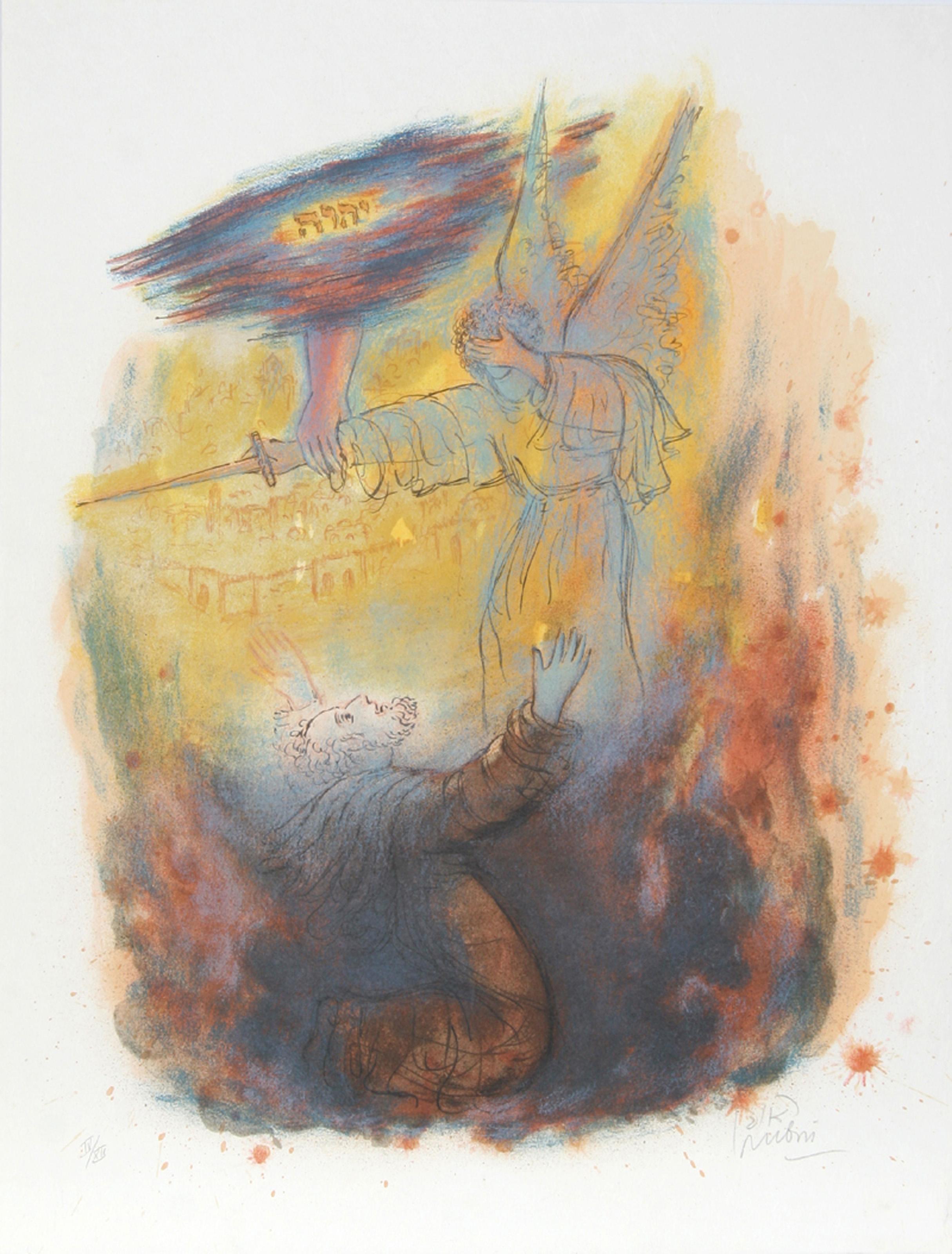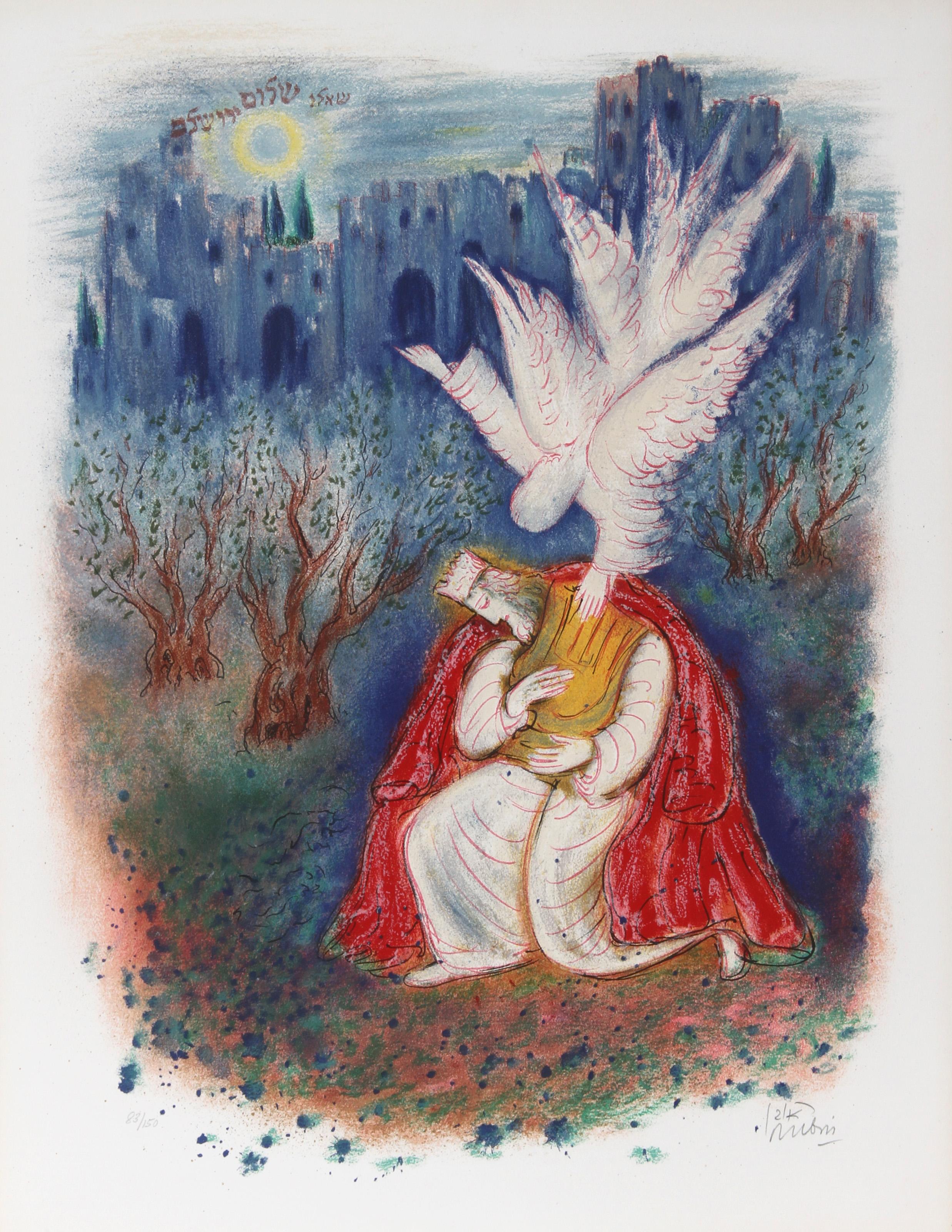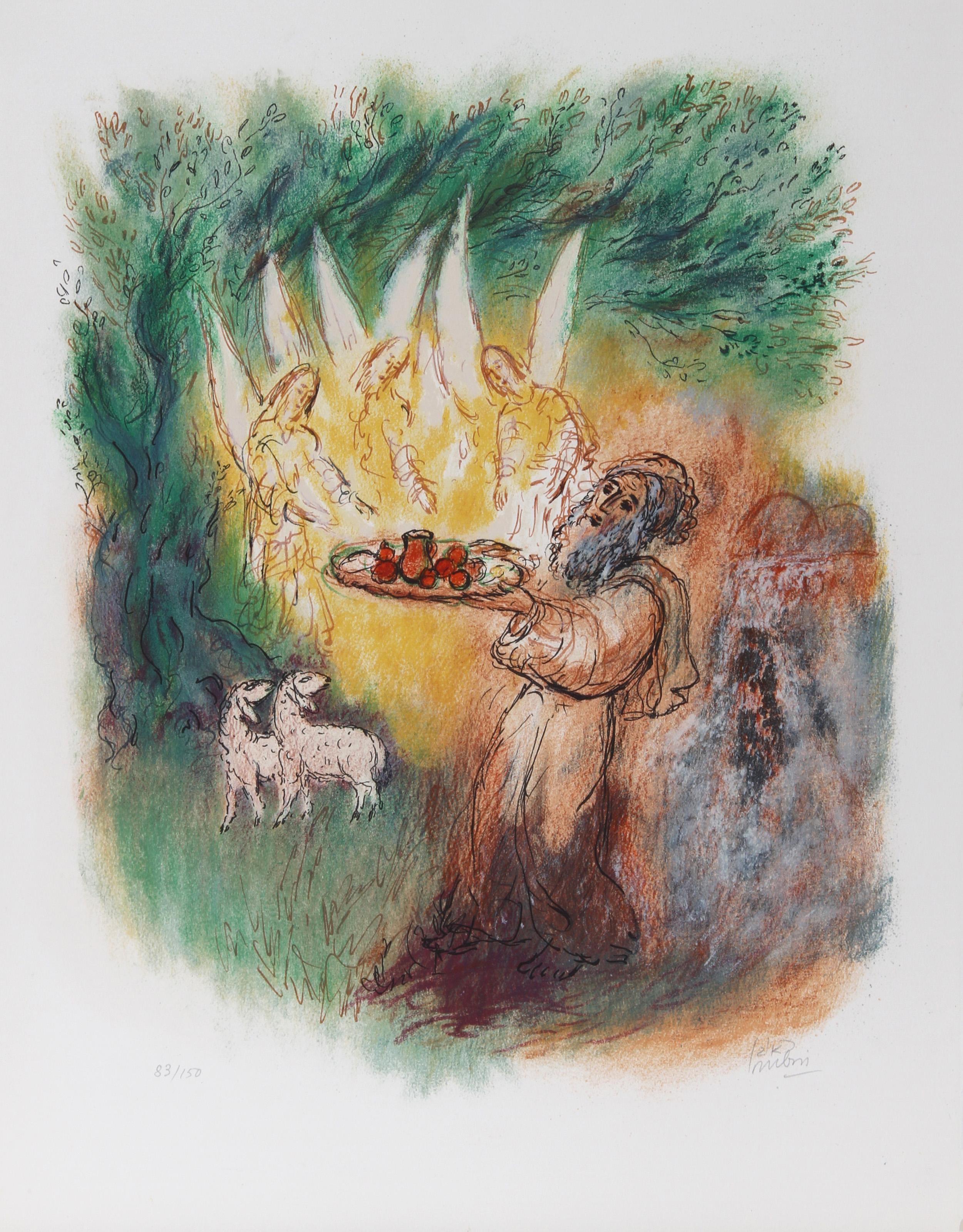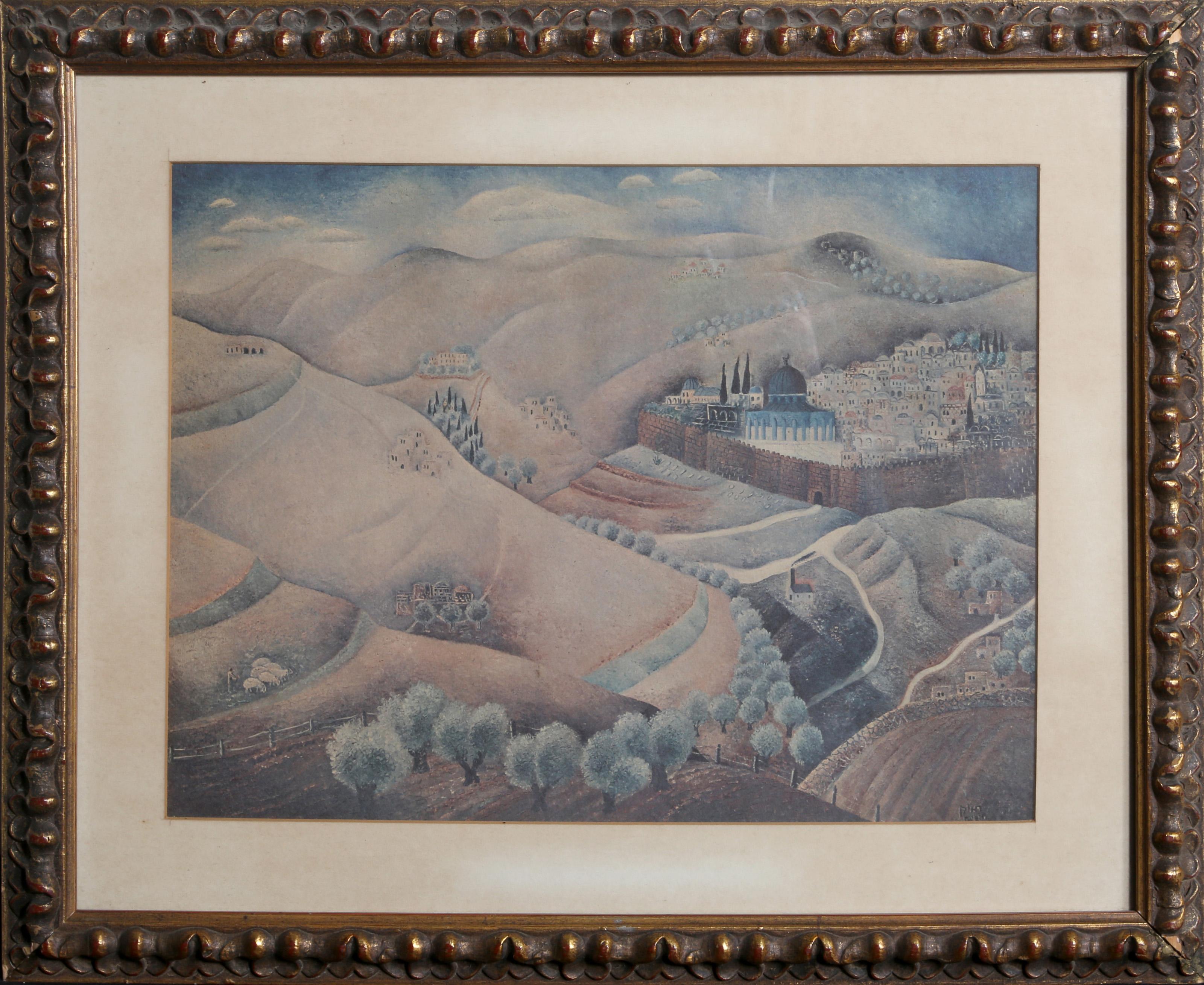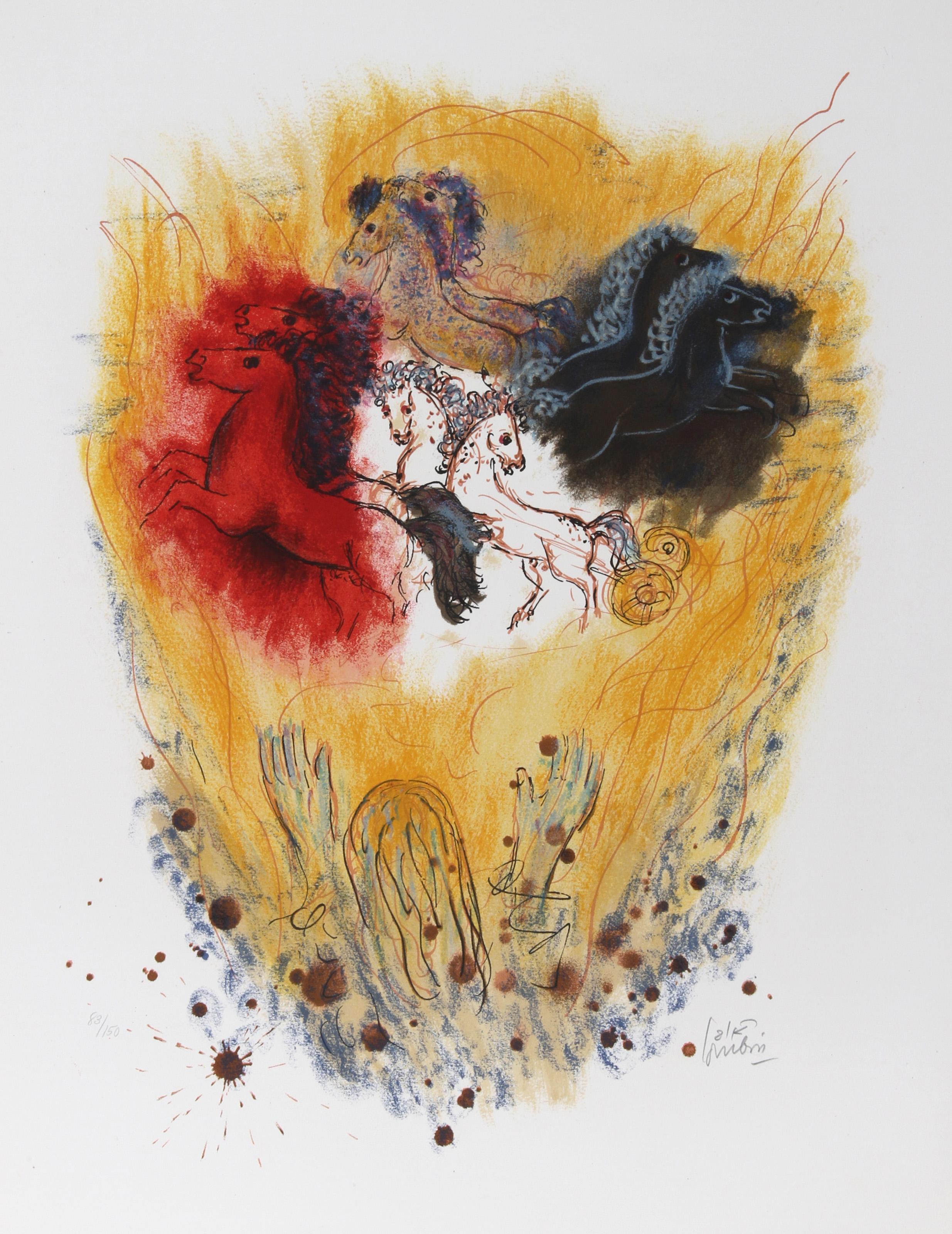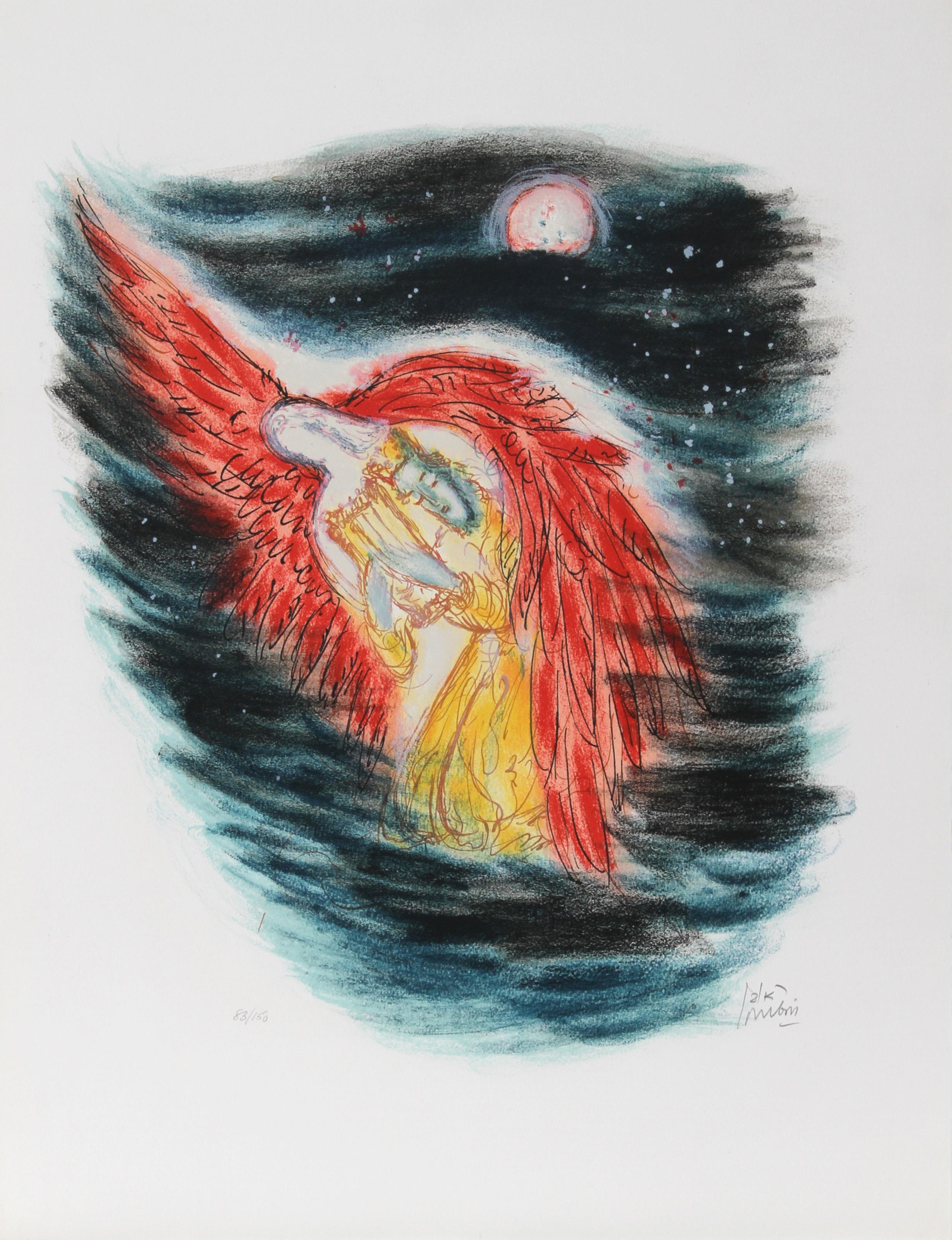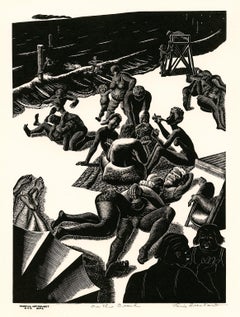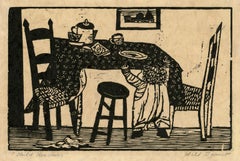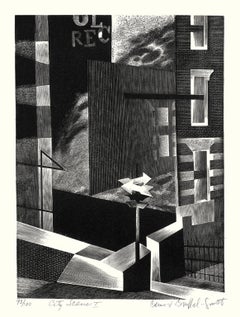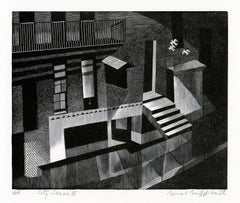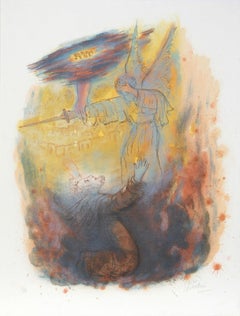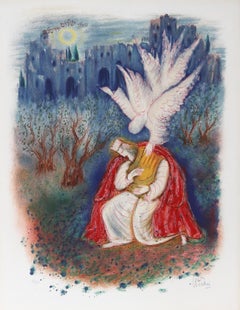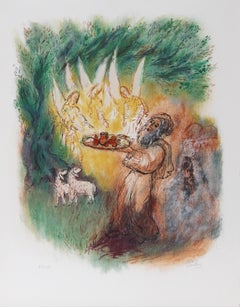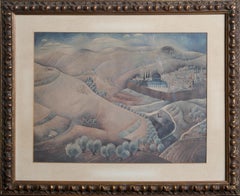Items Similar to Six works from Días de Ira (Days of Wrath) — Anti-Fascist Modernism
Want more images or videos?
Request additional images or videos from the seller
1 of 8
Helios GomezSix works from Días de Ira (Days of Wrath) — Anti-Fascist Modernism1929-1930
1929-1930
About the Item
Helios Gomez, Six works from 'Días de Ira' (Days of Wrath): 'Avenir', 'La Ley de Fugas',
'Los Presidios', 'Iberia', 'La Ley', and 'Le Soldado', 1929-1930. Each signed in the matrix. Six letterpress relief prints after the original drawings, with text in black ink on buff, wove paper; the full sheets with margins. Slight toning at the sheet edges, otherwise in very good condition. From the vintage suite of 23 numbered prints, titled in five languages with Spanish verses in linotype. Matted to museum standards, unframed.
As published in 'Días de Ira' (Days of Wrath), a portfolio of 23 drawings and poems on the “Spanish White Terror” by Spanish artist Helios Gómez, his first publication. Accompanied by an introduction by the 'Socialist International' and with a foreword by Romain Rolland. Printed in Berlín in 1930.
Sheet sizes, each 12 7/8 x 9 1/4 inches.
ABOUT THE ARTIST
"Free art from representational conventions and make it live from its own dynamism; make the spectator feel the emotion of an idea thanks to pure abstract plastic art: that is, in short, my artistic aspiration... I wanted to touch the people through art".
— Helios Gómez.
Helios Gómez (1905–1956) was born in Triana, Seville, into a working-class Calé (gypsy) family. He received his training at the Seville Industrial Arts and Crafts School and the Cartuja factory as a painter and decorator of ceramics. His initial works were published in the anarchist Páginas Libres, and he illustrated books by local authors like Rafael Laffon and Felipe Alaiz. In 1925, he showcased his work for the first time at the Kursaal in Seville, followed by exhibitions in Madrid at the Ateneo and in Barcelona at the Dalmau Gallery the subsequent year.
Gómez became increasingly aware of the need for political change, aligning himself with anarchist groups and committing to express his political beliefs through his art, writing, and speeches. His artistic career allowed him some acceptance in broader Spanish society, which still primarily viewed Romani identity as acceptable only through creative expression. Unfortunately, anti-Romani sentiment persisted, reflected in critical reviews and media coverage.
His early illustrations for anarchist writer Felipe Alaiz and exhibitions at radical spaces like Café Kursaal marked the beginning of his activism. In 1927, due to his political involvement, he had to flee Spain and travel across Western Europe, connecting with avant-garde art movements and the labor movement. This experience significantly influenced his work, which incorporated elements of cubism, expressionism, and futurism. Upon returning to Spain in 1930, he settled in Barcelona and collaborated as a printmaker with the Confederación Nacional del Trabajo.
Gómez later renounced anarchism and joined the Communist Party of Spain (PCE), believing that the international communist movement was the most effectively organized force opposing the rise of fascism. He participated in communist rallies and was imprisoned in Barcelona's Model prison. During the Spanish Civil War, he fought with the Communist Party. He gave an interview to the leftist magazine Crónica, where he spoke about the anti-fascist cause and praised the Soviet Union for its integration of Romani people. By 1938, he had rejoined the anarchist movement and worked on the design of the newspaper El Frente. After fleeing the country during the Nationalists' Catalonia Offensive, he was interned in French concentration camps.
In the aftermath of the war, as details of the Romani Holocaust started to emerge, he embraced his Romani identity more openly, especially after his imprisonment under the Franco dictatorship. He spent time in Model prison from 1945 to 1946 and again from 1948 to 1954, during which he focused on writing. He produced two essays, including one on Romani art, two historical novels, an autobiographical epic poem titled ‘Erika’, and over 100 poems, embedding Romani themes throughout his work. His poetry was published posthumously in 2006 as part of the ‘Poemas de lucha y sueño' collection.
Recognized primarily for his graphic art, historians María Sierra and Juan Profundo emphasize his significant role in visually representing Spanish workers and anti-fascist themes during the 1930s. Along with Mariano R. Vázquez, Gómez exemplified Romani involvement in the Spanish anarchist movement.
His son, Gabriel Gómez, has been instrumental in recovering and promoting Helios Gómez's works through the Associació Cultural Helios Gómez. His art is represented in the collections at Yale University, Württembergischer Kunstvere in Stuttgart, Germany, and Museu Nacional d'Art de Catalunya in Barcelona, Spain.
About the Seller
5.0
Recognized Seller
These prestigious sellers are industry leaders and represent the highest echelon for item quality and design.
Platinum Seller
Premium sellers with a 4.7+ rating and 24-hour response times
Established in 1995
1stDibs seller since 2016
300 sales on 1stDibs
Typical response time: 1 hour
Associations
International Fine Print Dealers Association
- ShippingRetrieving quote...Shipping from: Myrtle Beach, SC
- Return Policy
Authenticity Guarantee
In the unlikely event there’s an issue with an item’s authenticity, contact us within 1 year for a full refund. DetailsMoney-Back Guarantee
If your item is not as described, is damaged in transit, or does not arrive, contact us within 7 days for a full refund. Details24-Hour Cancellation
You have a 24-hour grace period in which to reconsider your purchase, with no questions asked.Vetted Professional Sellers
Our world-class sellers must adhere to strict standards for service and quality, maintaining the integrity of our listings.Price-Match Guarantee
If you find that a seller listed the same item for a lower price elsewhere, we’ll match it.Trusted Global Delivery
Our best-in-class carrier network provides specialized shipping options worldwide, including custom delivery.More From This Seller
View AllOn the Beach (Coney Island, New York) — 1930s Graphic Modernism, WPA
By Lou Barlow
Located in Myrtle Beach, SC
Lou Barlow (Louis Breslow), 'On the Beach' (Coney Island) wood engraving, c. 1937, edition c. 25. Signed and titled in pencil. Stamped 'FEDERAL ART PROJECT NYC WPA' in the bottom left margin. A fine, richly-inked impression, with all the fine lines printing clearly, on cream wove paper, with full margins (1 1/2 to 3 inches), in excellent condition. Matted to museum standards, unframed. Scarce.
Image size 11 x 8 1/8 inches; sheet size 16 x 11 3/8 inches.
Created during the Great Depression for the Works Progress Administration (WPA), Federal Art Project, New York City.
Impressions of this work are in the permanent collections of the Amon Carter Museum of Art, Illinois State Museum, and the New York Public Library.
ABOUT THE IMAGE
Due to Coney Island's proximity to Manhattan, Brooklyn, and other New York boroughs, it began attracting vacationers in the 1830s and 1840s. Most of the vacationers were wealthy and went by carriage roads and steamship services that reduced travel time from a formerly half-day journey to two hours. By the late 1870s, the development of Coney Island's amusement park attractions and hotels drew people from all social classes. When the Brooklyn Rapid Transit Company electrified the steam railroads and connected Brooklyn to Manhattan via the Brooklyn Bridge at the beginning of the 20th century, Coney Island turned rapidly from a resort to an accessible location for day-trippers seeking to escape the summer heat in New York City's tenements. In 1915, the Sea Beach Line was upgraded to a subway line, and the opening of the Stillwell Avenue station in 1919 ushered in Coney Island's busiest era. On the peak summer days, over a million people would travel to Coney Island. In 1937, New York City purchased a 400-foot-wide strip of land along the shoreline to allow the boardwalk to be moved 300 feet inland. At this point, Coney Island was so crowded on summer weekends that parks commissioner Robert Moses...
Category
1930s American Modern Figurative Prints
Materials
Woodcut
'Child Reaching' — 1940s American Modernism
By Will Barnet
Located in Myrtle Beach, SC
Will barnet, 'Child Reaching', woodcut, 1940, edition 25, Cole 82. Signed and titled in pencil. A fine, black impression, on fibrous Japan paper, with full margins (5/8 to 1 3/4 inch...
Category
1940s American Modern Figurative Prints
Materials
Woodcut
City Scene I — Mid-Century Modernism, Precisionism
By Bernard Brussel-Smith
Located in Myrtle Beach, SC
Bernard Brussel-Smith, 'City Scene I', wood engraving, 1949, edition 100. Signed, titled, and numbered '93/100' in pencil. A superb, richly-inked impression, on white wove paper, wi...
Category
1940s American Modern Figurative Prints
Materials
Woodcut
City Scene II — Mid-Century Modernism, Precisionism
By Bernard Brussel-Smith
Located in Myrtle Beach, SC
Bernard Brussel-Smith, 'City Scene II', wood engraving, 1949, artist's proof, edition 100. Signed, titled, and annotated 'A.P.' in pencil. A superb, richly-inked impression, on whit...
Category
1940s American Modern Figurative Prints
Materials
Woodcut
'Commuters' — Early 20th-Century Modernism
By George Josimovich
Located in Myrtle Beach, SC
George Josimovich, 'Commuters', linocut, 1922-23, edition 20. Signed, dated '22, titled, and annotated '9/20' in pencil. Initialed in the block 'G.J....
Category
1920s American Modern Figurative Prints
Materials
Linocut
'Crown of Roses' — Mid-century Modernism
By Mary Van Blarcom
Located in Myrtle Beach, SC
Mary Van Blarcom, 'Crown of Roses', color serigraph, c. 1945, edition not stated but small. Signed in pencil beneath the image, lower left. Titled in pencil, bottom left sheet corner. A rich painterly impression, with fresh colors, on cream laid paper, with full margins (3/8 to 7/8 inch), in excellent condition. Matted to museum standards, unframed.
Image size 8 13/16 x 12 11/16 inches; sheet size 9 1/2 x 8 5/16 inches.
ABOUT THE ARTIST
Painter, printmaker, and craftsperson, Mary Van Blarcom was born in Newark, New Jersey, and studied at Wellesley College. She was a member of the National Serigraph Society, where she served on the board of trustees from 1945 through 1952 and was 1st vice-president from 1949-51. She was also a member of the National Association of Women Artists, the Artists Equity Association, the American Color Print Society, the New Jersey Artists Association (Director), and Artists of Today.
Van Blarcom exhibited actively throughout the 1940s at many prominent art organizations, including Montclair Art Museum, 1941-45 and 1947-51 (prize, 1948); Society of Independent Artists, 1942-44; Artists of Today, 1942-46; Elisabeth Ney Museum, 1943; Northwest Printmakers, 1944, 1946-49; Laguna Beach Art Association, 1945-47, 1949; National Association of Women Artists, 1945-50, (prize, 1946); Library of Congress, 1946-47; Museum of Modern Art Traveling Exhibition, 1945-47; Carnegie Institute, 1947; Serigraph Gallery, 1946, 1951 (solo); American Color Print Society, 1947-52; Newark Museum, 1947-48, 1951; California State Library, 1947, 1949; National Serigraph Society, 1949 (prize), 1950 (prize); University of Chile, 1950; New Jersey State Museum, 1950; Philadelphia Art Alliance, 1951; and the Main Gallery, NY, 1952.
Van Blarcom’s work is represented in the collections of the Newark Public Library, the U.S. Library of Congress; the American Association of University Women; the New York Public Library; Tel-Aviv Museum, Alabama Polytechnic Institute, Princeton Print Club...
Category
1940s American Modern Figurative Prints
Materials
Screen
$320 Sale Price
20% Off
You May Also Like
David and the Lord's Angel, Modern Lithograph by Reuven Rubin
By Reuven Rubin
Located in Long Island City, NY
Reuven Rubin, Israeli (1893 - 1974) - David and the Lord's Angel, Portfolio: Story of David Portfolio, Year: 1971, Medium: Lithograph on Arches, Signed and numbered in pencil, Edi...
Category
1970s Modern Figurative Prints
Materials
Lithograph
XII from Visions of the Bible, Modern Lithograph by Reuven Rubin
By Reuven Rubin
Located in Long Island City, NY
Reuven Rubin, Israeli (1893 - 1974) - XII from Visions of the Bible, Year: 1972, Medium: Lithograph, signed and numbered in pencil, Edition: 83/150, Image Size: 25 x 18 inches, S...
Category
1970s Modern Figurative Prints
Materials
Lithograph
III from Visions of the Bible, Modern Lithograph by Reuven Rubin
By Reuven Rubin
Located in Long Island City, NY
Reuven Rubin, Israeli (1893 - 1974) - III from Visions of the Bible, Year: 1972, Medium: Lithograph, signed and numbered in pencil, Edition: 83/150, Image Size: 25 x 18 inches, S...
Category
1970s Modern Figurative Prints
Materials
Lithograph
As The Mountains Are Round, Jerusalem 1925, Modern Offset lithograph
By Reuven Rubin
Located in Long Island City, NY
Reuven Rubin, Israeli (1893 - 1974) - As The Mountains Are Round, Jerusalem 1925, Medium: Offset lithograph, signed in the plate, Size: 12 x 16 in. (30.48 x 40.64 cm), Frame Size...
Category
1970s Modern Figurative Prints
Materials
Offset
XI from Visions of the Bible, Modern Lithograph by Reuven Rubin
By Reuven Rubin
Located in Long Island City, NY
Reuven Rubin, Israeli (1893 - 1974) - XI from Visions of the Bible, Year: 1972, Medium: Lithograph, signed and numbered in pencil, Edition: 83/150, Image Size: 25 x 18 inches, Si...
Category
1970s Modern Figurative Prints
Materials
Lithograph
VIII from Visions of the Bible, Modern Lithograph by Reuven Rubin
By Reuven Rubin
Located in Long Island City, NY
Reuven Rubin, Israeli (1893 - 1974) - VIII from Visions of the Bible, Year: 1972, Medium: Lithograph, signed and numbered in pencil, Edition: 83/150, Image Size: 25 x 18 inches, ...
Category
1970s Modern Figurative Prints
Materials
Lithograph
